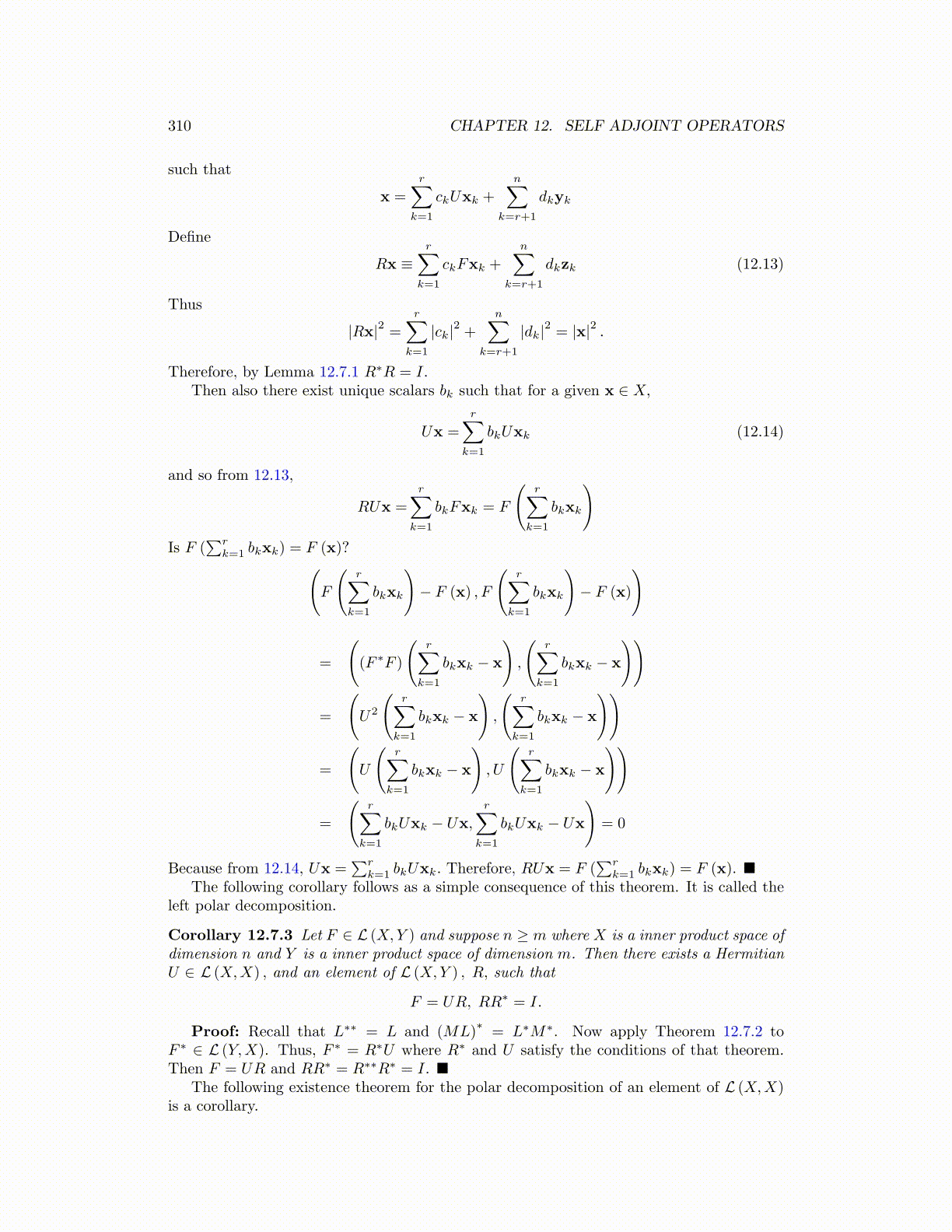
310 CHAPTER 12. SELF ADJOINT OPERATORS
such that
x =
r∑k=1
ckUxk +
n∑k=r+1
dkyk
Define
Rx ≡r∑
k=1
ckFxk +
n∑k=r+1
dkzk (12.13)
Thus
|Rx|2 =
r∑k=1
|ck|2 +n∑
k=r+1
|dk|2 = |x|2 .
Therefore, by Lemma 12.7.1 R∗R = I.Then also there exist unique scalars bk such that for a given x ∈ X,
Ux =r∑
k=1
bkUxk (12.14)
and so from 12.13,
RUx =
r∑k=1
bkFxk = F
(r∑
k=1
bkxk
)Is F (
∑rk=1 bkxk) = F (x)?(
F
(r∑
k=1
bkxk
)− F (x) , F
(r∑
k=1
bkxk
)− F (x)
)
=
((F ∗F )
(r∑
k=1
bkxk − x
),
(r∑
k=1
bkxk − x
))
=
(U2
(r∑
k=1
bkxk − x
),
(r∑
k=1
bkxk − x
))
=
(U
(r∑
k=1
bkxk − x
), U
(r∑
k=1
bkxk − x
))
=
(r∑
k=1
bkUxk − Ux,
r∑k=1
bkUxk − Ux
)= 0
Because from 12.14, Ux =∑r
k=1 bkUxk. Therefore, RUx = F (∑r
k=1 bkxk) = F (x). ■The following corollary follows as a simple consequence of this theorem. It is called the
left polar decomposition.
Corollary 12.7.3 Let F ∈ L (X,Y ) and suppose n ≥ m where X is a inner product space ofdimension n and Y is a inner product space of dimension m. Then there exists a HermitianU ∈ L (X,X) , and an element of L (X,Y ) , R, such that
F = UR, RR∗ = I.
Proof: Recall that L∗∗ = L and (ML)∗
= L∗M∗. Now apply Theorem 12.7.2 toF ∗ ∈ L (Y,X). Thus, F ∗ = R∗U where R∗ and U satisfy the conditions of that theorem.Then F = UR and RR∗ = R∗∗R∗ = I. ■
The following existence theorem for the polar decomposition of an element of L (X,X)is a corollary.